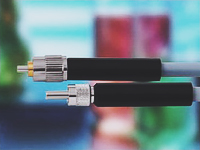 Recently a team of scientists from an American research center has presented a fiber optic technology used to create a battery management system applying embedded fiber optic sensors and machine learning. The thing is that the combination of fiber sensors and machine learning allows for developing more efficient and low-cost designs of smart battery charge management systems.
Recently a team of scientists from an American research center has presented a fiber optic technology used to create a battery management system applying embedded fiber optic sensors and machine learning. The thing is that the combination of fiber sensors and machine learning allows for developing more efficient and low-cost designs of smart battery charge management systems.
The important fact is that scientists pay careful attention to lithium-ion battery packs applied in hybrid and electric devices. Therefore, these fiber optic sensors allow for monitoring cell degradation and health data and predicting remaining battery life. Moreover, the fiber sensors have been already tested and demonstrated high precision across different use-cases at both the cell and module levels.
The operating principle of such a fiber optic system is based on the wavelength-shift detection technology that “measures the signals from fiber sensors installed within the active chemistry of the battery.” The fiber optic system has a resolution of 30fm and the KHz speed leading to obtaining the data about the charge’s state and failure warning.
Additionally, a read-out device records these data. Then machine learning algorithms evaluate it to offer real-time performance management of battery charge. Recently, the tests of fiber optic sensors have been finished at the module level of electric car batteries after tests on individual lithium-ion cells. According to the test results, these fiber sensors enable to decrease in the form factor of hybrid and electric car batteries by more than 25% leading to low-cost manufacturing at the same energy density.
Nevertheless, the team plans to perform additional testing and research to learn how to scale the fiber optic technology for larger batteries. Thus, scientists want to use original equipment manufacturers to examine the fiber optic system installed in hybrid and electric vehicles and to open new applications of fiber optic sensors for various energy and structural systems.
The thing is that the developed fiber sensors are regarded as a part of the energy technology program that aims at developing clean and abundant energy for a wide range of applications. Finally, the team paid attention to chemical energy storage for hybrid and electric systems, consumer electronics, and the electrical grid; advanced energy conversion devices; wireless fiber sensors; and advanced analytics before the novel fiber optic technology to increase energy utilization.
Optromix is a fast-growing vendor of fiber Bragg grating (FBG) product line such as fiber Bragg grating sensors, for example, fbg strain sensors, FBG interrogators and multiplexers, Distributed Acoustic Sensing (DAS) systems, Distributed Temperature Sensing (DTS) systems. The company creates and supplies a broad variety of fiber optic solutions for monitoring worldwide. If you are interested in structural health monitoring systems and want to learn more, please contact us at info@optromix.com


 A team of scientists has produced novel compact
A team of scientists has produced novel compact